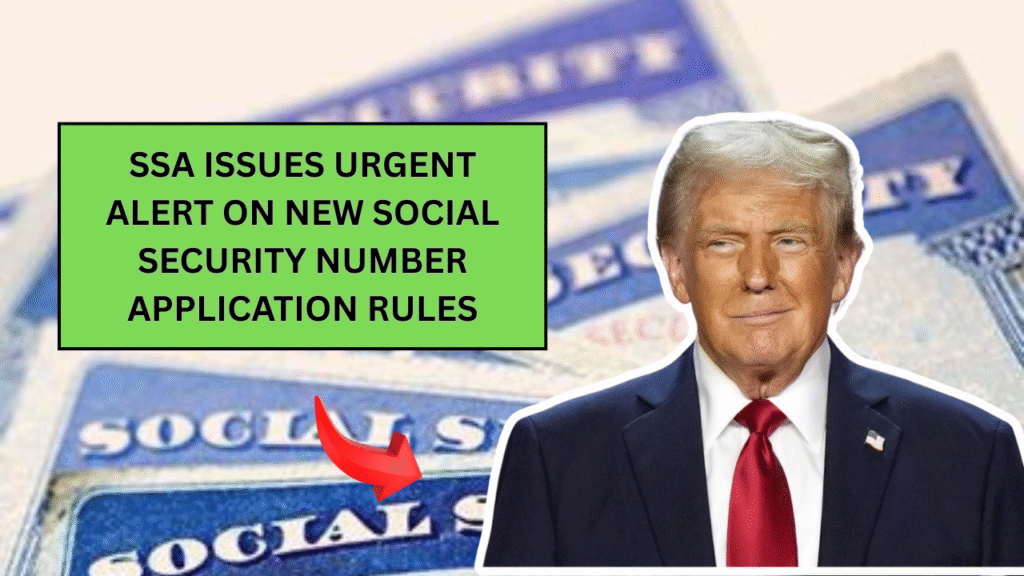In a series of urgent emergency messages, the Social Security Administration (SSA) has announced sweeping changes to how Americans apply for Social Security Numbers (SSN), verify their identities, and file disability claims.
These updates, some of which took effect in March and April 2025, are part of the agency’s broader efforts to improve security, reduce fraud, and streamline its services. However, the changes also bring new challenges for applicants, especially non-citizens, first-time SSN seekers, and disability claimants.
Here’s what you need to know about the SSA’s latest emergency directives and how they could impact millions of Americans.
Tighter Identity Verification Rules for SSN & Benefits
As of April 14, 2025, the SSA has intensified its identity verification process for both new and existing beneficiaries.
According to the SSA’s latest directive anyone applying for a new SSN, updating direct deposit information, or modifying personal data must now verify their identity through the SSA’s ‘my Social Security’ portal.
Those who cannot complete the verification online will have to visit their local SSA office in person.
This change was rolled out in response to rising incidents of identity theft, scams, and fraudulent activities involving Social Security numbers and payments.

Temporary Pause on Automatic SSN Issuance for Non-Citizens
In another significant update, effective March 18, 2025, the SSA temporarily paused the automatic issuance of SSNs to applicants using Form I-765 (Application for Employment Authorization).
Previously, many individuals received their SSN automatically when applying for work authorization through U.S. Citizenship and Immigration Services (USCIS). However, during this 90-day pause, those granted an Employment Authorization Document (EAD) must personally visit an SSA office to apply for an SSN.
The SSA has yet to confirm if the temporary pause will be extended beyond the initial 90 days.
Policy Overhaul on Disability Claims Review
In another critical update, the SSA has revised its policies regarding the reopening of prior disability determinations.
Under the updated rules, if a claimant was previously granted disability benefits and the circumstances remain unchanged, the SSA may now apply “collateral estoppel”, meaning they will no longer re-evaluate the same medical issues if previously decided favorably.
This move is intended to cut down on unnecessary paperwork and reduce backlogs, allowing the SSA to focus resources on new and pending disability claims.
SSA Shifts to Appointment-Based In-Person Services
While walk-in visits are still permitted, the SSA is encouraging individuals to schedule appointments before visiting field offices or Social Security Card Centers. This change is aimed at reducing wait times, managing large crowds, and improving the quality of customer service.
The SSA emphasized that most services can still be accessed through their ‘my Social Security’ online portal (my Social Security).
SSA Suspends Sex Designation Changes on Records
In a controversial move, the SSA has suspended the processing of requests to change the sex designation on Social Security records.
This suspension follows recent executive orders and has raised concerns among advocacy groups. Individuals who previously could update their gender marker on their SSA records are now unable to do so under the new directive.
What Should Applicants Do Now?
Given the rapid and significant changes, the SSA recommends:
- Registering for a ‘my Social Security’ account as soon as possible at SSA’s official website.
- Scheduling appointments in advance by calling 1-800-772-1213 or using the online appointment tool.
- Double-checking documentation requirements before visiting local offices.
- Staying updated via the SSA’s official newsroom at SSA Newsroom.
Final Thoughts
While these changes aim to modernize the SSA’s systems and prevent fraud, they may cause temporary confusion and inconvenience, especially for first-time applicants and vulnerable populations.
It’s important for anyone affected to stay informed, prepare documentation ahead of time, and utilize SSA’s online resources wherever possible. As the situation evolves, further updates are expected from the agency.


